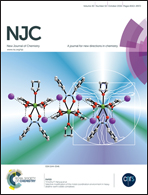Organic–inorganic binary nanoparticle-based composite separators for high performance lithium-ion batteries
Abstract
In an effort to improve the thermal resistance and the electrochemical performances of separators for lithium-ion batteries, we demonstrate a facile approach to prepare a novel ZrO2/poly(vinylidene fluoride-co-hexafluoro-propylene) (PVdF-HFP) binary particle-coated polyethylene terephthalate (PET) nonwoven composite separator. In this approach, particle-shaped PVdF-HFP was used as a binder for the first time to attach ZrO2 particles to a PET nonwoven substrate by a solvent vapor-induced bonding process. This method can improve the microstructure and surface properties of the composite separator compared with the conventional film-shaped polymer binder. The electrolyte wettability, ionic conductivity and thermal stability of the ZrO2/PVdF-HFP composite separator are superior to those of commercially available microporous polyolefin separators due to the well-connected three-dimensional porous structure and the electrolyte-philic surface properties of the composite separator. As a result, the cells assembled with the composite separator exhibit better cell performance such as the discharge C-rate capability and cycling performance, compared with those assembled with polyolefin-based separators. Conspicuously, the improved performance of the ZrO2/PVdF-HFP separator indicates that binary particle-based composite separators could be potentially applied in next generation lithium-ion batteries.


 Please wait while we load your content...
Please wait while we load your content...